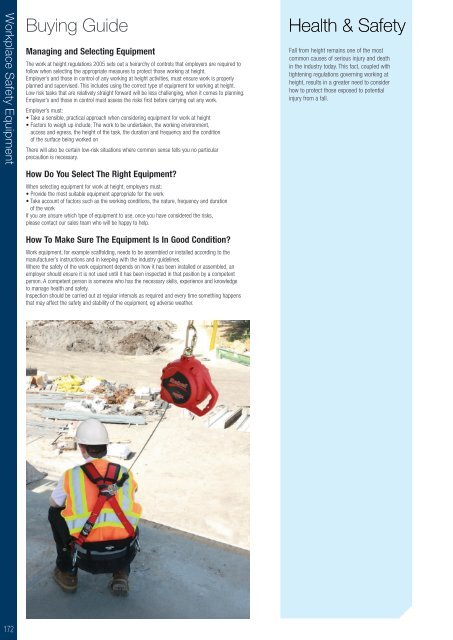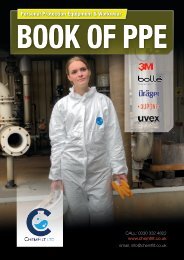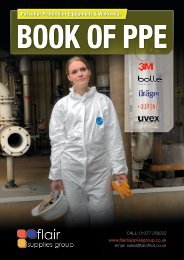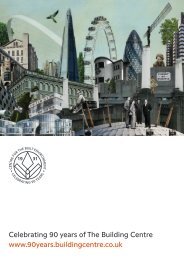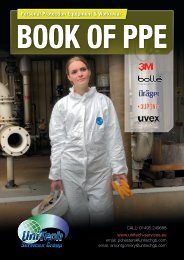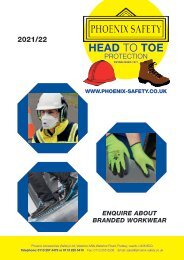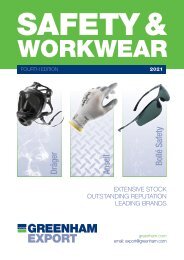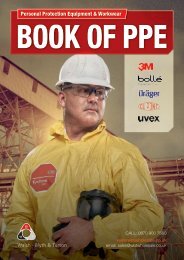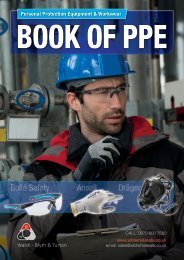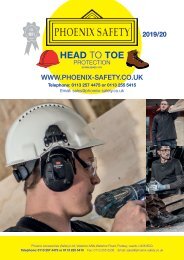Phoenix Safety Head to Toe Protection Catalogue 2021
Phoenix Safety Head to Toe Protection Catalogue 2021
Phoenix Safety Head to Toe Protection Catalogue 2021
Create successful ePaper yourself
Turn your PDF publications into a flip-book with our unique Google optimized e-Paper software.
Workplace <strong>Safety</strong> Equipment<br />
Buying Guide<br />
Managing and Selecting Equipment<br />
The work at height regulations 2005 sets out a heirarchy of controls that employers are required <strong>to</strong><br />
follow when selecting the appropriate measures <strong>to</strong> protect those working at height.<br />
Employer’s and those in control of any working at height activities, must ensure work is properly<br />
planned and supervised. This includes using the correct type of equipment for working at height.<br />
Low risk tasks that are relatively straight forward will be less challenging, when it comes <strong>to</strong> planning.<br />
Employer’s and those in control must assess the risks first before carrying out any work.<br />
Employer’s must:<br />
• Take a sensible, practical approach when considering equipment for work at height<br />
• Fac<strong>to</strong>rs <strong>to</strong> weigh up include; The work <strong>to</strong> be undertaken, the working environment,<br />
access and egress, the height of the task, the duration and frequency and the condition<br />
of the surface being worked on<br />
There will also be certain low-risk situations where common sense tells you no particular<br />
precaution is necessary.<br />
How Do You Select The Right Equipment?<br />
When selecting equipment for work at height, employers must:<br />
• Provide the most suitable equipment appropriate for the work<br />
• Take account of fac<strong>to</strong>rs such as the working conditions, the nature, frequency and duration<br />
of the work<br />
If you are unsure which type of equipment <strong>to</strong> use, once you have considered the risks,<br />
please contact our sales team who will be happy <strong>to</strong> help.<br />
Health & <strong>Safety</strong><br />
Fall from height remains one of the most<br />
common causes of serious injury and death<br />
in the industry <strong>to</strong>day. This fact, coupled with<br />
tightening regulations governing working at<br />
height, results in a greater need <strong>to</strong> consider<br />
how <strong>to</strong> protect those exposed <strong>to</strong> potential<br />
injury from a fall.<br />
How To Make Sure The Equipment Is In Good Condition?<br />
Work equipment, for example scaffolding, needs <strong>to</strong> be assembled or installed according <strong>to</strong> the<br />
manufacturer’s instructions and in keeping with the industry guidelines.<br />
Where the safety of the work equipment depends on how it has been installed or assembled, an<br />
employer should ensure it is not used until it has been inspected in that position by a competent<br />
person. A competent person is someone who has the necessary skills, experience and knowledge<br />
<strong>to</strong> manage health and safety.<br />
Inspection should be carried out at regular intervals as required and every time something happens<br />
that may affect the safety and stability of the equipment, eg adverse weather.<br />
172


